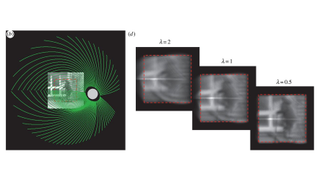This is what the world looks like through a bionic eye
According to sight simulations

Understanding how another person perceives the world is not an easy task, particularly when it comes to sight. But vision researchers are working on simulations that give us a glimpse of what someone with a bionic eye implant might see when they open their eyelids.
A team from the University of Washington created simulations of restored sight after two different types of sight recovery therapy. "This is the first visual simulation of restored sight in any realistic form," said Iona Fine who led the team. "Now we can actually say, 'This is what the world might look like if you had a retinal implant.'"
Sight restoration surgery is not cheap or particularly comfortable. It involves either implanting electric prostheses which stimulate surviving eyeball cells with an array of electrodes placed on the retina, or inserting proteins into surviving retinal cells to make them light sensitive. Neither produce vision that is even close to "normal."
An elusive target
"The retina contains a vast diversity of cells that carry distinct visual information and respond differently to visual input," said Geoffrey Boynton, who also contributed to the research. "Electrically stimulating the retina excites all of these cells at the same time, which is very different from how these cells respond to real visual input."
As such, people with bionic eyes tend to see fuzzy shapes or blurred outlines – and objects can disappear entirely if they're moving too fast. Here's a short sample of the output of the model:
"As these devices start being implanted in people, we can compare different types of devices and the different perceptual outcomes of each," said Fine.
"The path to fully restored eyesight is an elusive target. We need to start developing more sophisticated models of what people actually see. Until we do that, we're just shooting in the dark in trying to improve these implants."
Get daily insight, inspiration and deals in your inbox
Get the hottest deals available in your inbox plus news, reviews, opinion, analysis and more from the TechRadar team.
Most Popular


